|
February '04 TTC Public
Hearings
Beginning February 5, 2004 in Duval and Montague
Counties and ending on February 27, 2004 in Collingsworth County, TxDOT
conducted a statewide blitz of "public hearings." All 254 counties were
covered in just 23 days. Thirty-five "public hearings" were conducted on
Tuesday, February 24th alone. [why?]
Most of these meetings were conducted by TxDOT's Area
Engineers. In every case the TxDOT official read from a prepared script,
distributed an eight-page handout, and showed a videotape presentation
featuring Governor Perry and Transportation Commission Chairman Ric
Williamson. [handout]
Citizens in attendance at many hearing had questions,
issues and concerns. What they didn't have was good answers. At some
hears, no answers at all. [more]
Beyond the script TxDOT officials were ill prepared to
answer questions from the public in attendance. Reports from
across the state indicate that when they attempted to answer concerns
and questions, the answers they gave were often in direct conflict with official TxDOT
plans, statements and the position of the Texas Transportation
Commission. [examples]
Despite the absence of much public knowledge and
understanding about this gigantic Corridor project, a few hearings were
attended by citizens who had serious questions. Too bad they didn't get
serious answers.
TxDOT Does
Poor Job of Attracting Public to Hearings
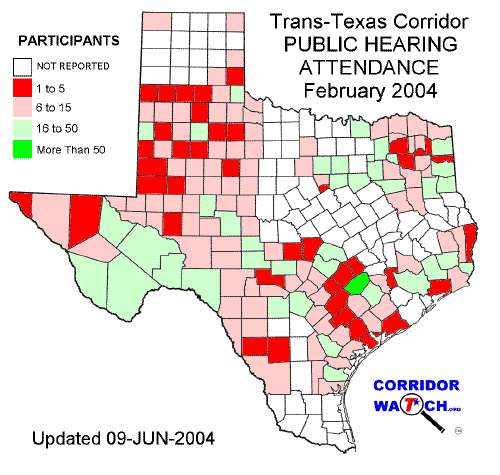
Concerns Expressed -
TxDOT TTC Public
Hearings: February 2004
-
Bee County: A story appearing in
the Beeville Bee-Picayune under the headline,
"Trans Texas Corridor hearing Citizens voice
concern for immediate future." Local citizen and at least
three members of Bee County Commissioner's Court listened in what was
described as a packed courtroom to the canned TxDOT presentation. Dr.
John Hester is quoted, "What you have presented here is beautiful pie
in the sky. Rural areas like Beeville will be shorted again."
County Judge Jimmy Martinez was quoted as
saying, "I see frustration on the part of some of us here
tonight."
County Commissioner Susan Stasny asked, "How are we
going to be players in this system when we are from small rural
America?"
[March 10, 2004; www.bee-picayune.com ]
-
Bell County: The Belton Journal reported more than
75 people attended their hearing. Among them was
County Commissioner Richard Cortez [Cortese] quoted as
saying, "I am concerned about what this could do to the county."
Another participant was quoted, "Texans like their space and their
cars. Texans will never ride a rail system."
[February 26, 2004;
www.beltonjournal.com ]
-
Brewster County:
Under the headline, "Concerns raised on
highway 'Corridor'," Desert-Mountain Times
reported Alpine Mayor Mickey Clouse
as being worried about air pollution and safety issues involving truck
traffic and hazardous materials. Jeff Davis
County Commissioner Diane Lacy urged TxDOT to go around the
area saying that local citizens would suffer the negative impact of such
a corridor without receiving any benefit. Commissioner Lacy
also expressed concern about a non-elected authority being given the
power of condemnation. Alpine City Councilwoman
Nancy DeWitt described the corridor as "overkill." [March
4, 2004,
www.dmtimes.net
]
-
Colorado County: A Weimar Mercury article titled, Corridor Plan Draws Concerns
reads, "No one among about 30 people at the meeting expressed
support." "...individuals raised questions about the project's
impact on landowners." Columbus
City Manager David Stall was quoted, "... local economies
would be affected because there would be less traffic stopping for
gasoline, food and lodging in local communities." "It's going to kill little towns," said
a Justice of the Peace Frances Truchard. [February
19, 2004; www.weimarmercury.com
]
-
Cooke County: The Gainesville Daily Register quoted
comments made by Community Development Director
Carlos Vigil, "... this concept does not seem to consider
the vitality of communities. The plan focuses on moving traffic at high
speed. If it is done the way it's proposed, it will hurt us eventually
because they (TXDOT) don't make provision for easy on and off (the Trans
Texas Corridor) at Gainesville." [February 18,
2004; www.gainesvilleregister.com ]
-
Fayette County: The
Fayette County Record front page headline reads,
"TxDOT
Presents Corridor Plan To Overflow Crowd."
The Record reported, "Officials vague about location of
corridor, most in crowd opposed to idea."
Fayette County Judge Ed Janecka complained that he had only
heard about the meeting (held on Ash Wednesday) a day earlier. The Judge
is quoted, "... he wanted Gov. Rick Perry and top level executive
from the Texas Transportation Commission and TxDOT available at the
meeting to answer questions." Fayette
County Resident Lane Gosnay was quoted as saying,
"... a lot of people don't understand the impact of the corridor. Who
will answer our questions? she asked. And what are the water lines for?
So you can suck our water out and send it somewhere else? It's also an
easy way for a terrorist to knock out a bunch in one fell swoop." "It's
a terrifying nightmare. I'm scared to death of this," said
County Inspector Bill Durst. [March
2, 2004,
www.fayettecountyrecord.com ]
-
Guadalupe County: The Seguin Gazette
reported "Citizens expressed concerns about how the state will gain
funding for a 4,000-mile transportation system given the financial
struggle experience so far with SH 130." [February
26, 2004, seguingazette.com ]
-
Hill County: The Hillsboro Reporter quoted
Hillsboro Mayor Will Lowrance as
saying he didn't want to see local residents left out, "If there is
no access to the small towns, it will change the face of the state."
David Newman, a farmer was quoted as saying
"... the state couldn't
provide enough compensation if the corridors were going to split farms
and force agriculture producers to drive miles out of the way to reach
their land." Former County Judge Charles Herd
echoed concerns of others and questioned funding. According to the
article the hearing, one of the largest in the Waco District, stretched
two almost two hours and generated questions about property taking,
effects on wildlife, effects on air quality and alternative
transportation options. [February 26, 2004,
www.hillsbororeporter.com
]
-
Tarrant
County: An article appeared in the Star-Telegram titled,
"Corridor
plan's effects worry local leaders." Dallas
City Councilwoman Lois Finkleman is quoted, "We
support the concept of the Trans Texas Corridor, but we don't want it at
the expense of all the urban transportation improvement that are
needed." In reply the article reads, "State officials said that
they welcome the ideas but the the goal of the corridor plan is to
connect the regions of Texas, not solve traffic problems inside a metro
area." [February 13, 2004;
www.dfw.com ]
-
Val Verde
County: The Del Rio News-Herald reported that about
twenty Del Rioans attended the hearing in Del Rio, "... with tourism
and hundreds of other considerations ..." The article draws a
comparison of small western towns that were economically strangled when,
"passed over by the barons of the rails ..." It goes on to say,
"... Interstate Highways, too, have choked the life out of hundreds
of Texas burgs." [February 29, 2004;
www.delrionewsherald.com ]
|
    
|
Why Hold 254 Public
Hearings?
Why indeed!
"One of the pieces of 3588 required TxDOT
to hold a public hearing in every county that's potentially going to be
affected by the Trans Texas Corridor. They're in the midst of doing that
now."
— John Langmore, 78th Legislature Transportation
Policy Director
(Austin, March 4,
2004)
TxDOT is required to hold a
meeting in each county that the Corridor may pass through before they
can designate a route. That law might as well read "hold only one
meeting," as the application and effect would be the same. February's
public hearing blitz has effectively satisfied the law. Now TxDOT is
free to designate Corridor routes anywhere in the state without any legal
requirement for additional meetings or public participation.
Sec.
227.013. PUBLIC PARTICIPATION. Before designating a route
for a segment of the Trans-Texas Corridor, the department shall hold at
least one public hearing in each county through which the segment may
pass." — Texas Transportation Code [adopted by
HB-3588]
Please note that this is not public
participation in determining viability, economic impact, transportation
need, on any other aspect of the Corridor — just route. Yes,
there will likely be environmental hearings, but that will come after
TxDOT has determined the route, at least in general terms, and set the land 'taking' process in
motion.
|
    
|
Public
Hearing Materials
An eight-page handout was provided
to attendees at the February 2004 Trans Texas Corridor public hearings.
[ ] ]
-
Cover Page: Trans-Texas
Corridor logo.
-
Artist's Conception Drawing:
Absent required barriers this depiction paints a 'pretty picture' of the
Corridor.
-
Overview: Titled, "Phasing
in the Future," touts lanes that 'could' separate cars and trucks,
travel speeds up to 85 mph, reduction of air pollution, and enhanced
aesthetics of co-located utilities.
-
Questions and Answers: Two
pages of Q&A focus exclusively on routes not any other aspect of the
Corridor. [why?]
-
Coloring Page: A full-page
Texas state outline with markers for 31 cities. Directions, "Please
draw three routes connecting the regions/cities that you think should be
included in the Trans-Texas Corridor."
[more]
-
Public Comments / Trans-Texas
Corridor Hearing: A one-page, single-sided, comment sheet. Fifteen
blank comment lines, five questions, and mailing list request. THIS IS IT
?!? —
This is the public comment portion of the program.
[more]
-
Transportation Opinion Survey:
Eleven questions, four about the Corridor, three about transportation
issues, and four demographic questions. All marketing questions - none
ask for public opinion about whether the Trans Texas Corridor is a good
idea or not.
|
COVER

Click on Image to
Enlarge |
Figure 1
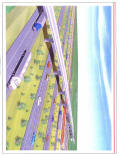
Click on Image to
Enlarge |
Phasing in the Future
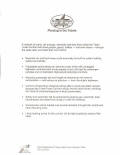
Click on Image to
Enlarge |
Q&A 1

Click on Image to
Enlarge |
Q&A 2
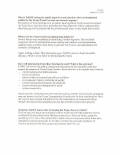
Click on Image to
Enlarge |
Coloring Page
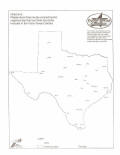
Click on Image to
Enlarge |
Public Comments

Click on Image to
Enlarge
 |
Transportation Survey

Click on Image to
Enlarge
 |

    
    
|
Color Me A
Picture

What is the purpose of this page?
What were they thinking? Is this
intended to get a few hundred people to color in a few corridor routes
that can later be used as a justification for spending $31 million
dollars per mile? [cost]
These were county hearings. If you
wanted REAL route input wouldn't a regional map with enough detail to
see the affected county (reason for the hearing) and existing roads and
landmarks be more helpful?
Why was everyone instructed to
draw three lines? Why not two? Why not four?
Does TxDOT think this elementary
school connect the dots exercise is valuable public input? Does the
public? Did the state legislature color some of these maps for the
Transportation Commission? If so I'd like to see them!
UPDATE:
At the May 2004 meeting of the Transportation Commission we learned that
TxDOT really does think this coloring page is valuable public input! So
much so that he reported on the drawing in great detail and even
prepared a new map for the Commissions review. According to Randall
Dillard the director of TxDOT's Public Information Office, "Nearly 70
percent of the routes they drew reflected the Department's conceptual
map. But they did have some other ideas as well."
[complete
remarks]
|
    
|
Ask Me
Another Question
Very little substance, okay
nothing of substance, was disclosed about the Trans Texas Corridor
project during the 'public hearings' held February 2004. If the citizens
in attendance didn't already know something about the corridor and the
far-reaching implications of recent changes in the law, the TxDOT folks
certainly did little to enlighten them. They effectively said, "Here's
our canned speech and a videotape, now tell us where you want us to
build it. Just draw three lines on the Texas state outline provided. We
left all the existing highways off the tiny map so they won't confuse
you. When you're done pass them forward and we'll send 'em right off to
our engineers in Austin so they can get started!"
There were five questions on the "Public
Comments / Trans-Texas Corridor Hearing" form. Each participant was
asked to answer these questions with an opinion ranging from Strongly
Agree to Strongly Disagree.
-
"This hearing helped me better understand the overall
transportation challenges in Texas."
-
"This hearing increased my understanding of the
Trans-Texas Corridor project."
-
"Technical information was presented in
understandable terms."
-
"Audio / visual aids enhanced the presentation."
-
"Overall, the presentation was worthwhile and
informative."
More marketing. No one from TxDOT
was asking any probing questions about the Corridor. Citizens weren't
even asked if they thought is was a good idea or not. Clearly TxDOT is
simply interested in how well they are selling this project.
UPDATE:
At the May 2004 meeting of the Transportation Commission we learned the
results of these questions. Here are some of the comments of Randall
Dillard the director of TxDOT's Public Information Office:
"As I mentioned,
attendees were given the opportunity to fill out a brief survey. I
need to emphasize that this was not a survey of the general public. It
was a survey of those that were interested enough in the Corridor to
attend a public hearing. Still, there were some very interesting
results.
"Ninety-three
percent said that transportation is very important or somewhat
important for economic development in the creation of jobs. Ninety-two
percent said separate lanes for cars and trucks were very important or
somewhat important. And nearly 70 percent said that they would be
willing to pay a toll to drive in a car-only lane. Seventy-seven
percent said rail was very important or somewhat important as a way to
help reduce traffic congestion on our state highways.
"While those taking
the survey were interested enough to attend a public hearing on the
Trans-Texas Corridor, less than 10 percent said they had extensive
knowledge about the Corridor. That's the same percentage that said
they had no knowledge -- no prior knowledge of the Corridor.
"Of those that had
prior knowledge, the feature they were most familiar with was the
separate lanes for cars and trucks. That was followed by corridors
connecting the state, but not cutting through the heart of our urban
centers.
"Increased use of
rail to reduce congestion on our highways, the idea of using tolls as
a way to help fund transportation improvements, and the inclusion of
utility corridors.
"We asked people to
prioritize seven issues related to the Corridor plan. As you see, they
want reduced traffic congestion, improved safety, economic development
and the jobs that it creates, and they want safe transport of
hazardous materials.
"It's interesting to
note that the safe transport of hazardous materials was ranked even
more important than improved air quality, which was ranked number six.
[complete
remarks]
|
    


Thank you for your time and interest.
    
|










